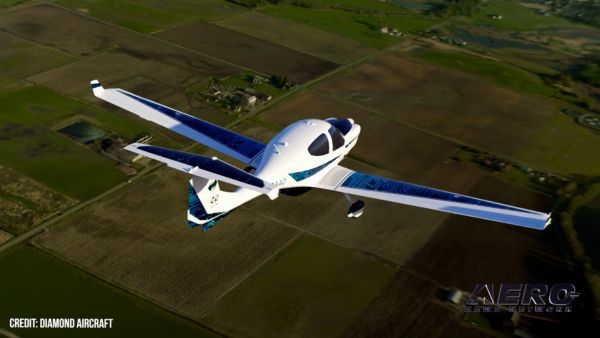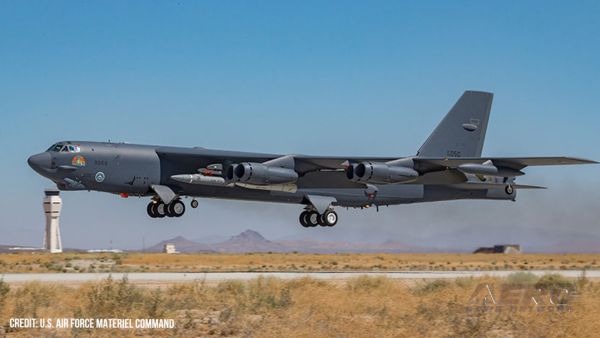Mon, Mar 30, 2020
Thermal Runaway May Lead To Fire
EASA has issued a Safety Information Bulletin (SIB) for lithium batteries installed on multiple models of Emergency Locator Transmitters installed aboard airliners.

These ELT and battery packs are known to be installed on, but not limited to Certification Specification CS-23 and CS-25 aeroplanes, CS-27 and CS-29 helicopters, or equivalent certification regulations, i.e. Federal Aviation Regulations (FAR) or Joint Aviation Requirements (JAR). Some of these ELT and battery packs may also be carried on board of an aircraft by the operator without being installed as an element of the aircraft's type design.
According to the SIB, The affected ELT and battery packs, in case of a thermal runaway, may release gases on fire. As this fire eventually self-extinguishes, the design remains compliant with the criteria of Appendix 1 of ETSO-C142a. Nevertheless, the presence of fire may affect the performance of the surrounding equipment, especially when the ELT is located close to safety equipment such as flotation devices.
EASA recommends holders of a type design approval (type certificate) or design change approval (supplemental type certificate, or minor change approval) to consider the presence of fire in addition to hot gases in assessing the effect at aircraft level of battery failures for the articles listed in the Applicability section of this SIB. This assessment should explicitly include the effect of fire or hot gases impingement on any stowed safety equipment installed in proximity of the battery such as life rafts, life jackets or emergency floatation systems. The EASA Special Condition on ‘Nonrechargeable Lithium Battery Installations’ provides additional considerations (also valid for CS-23, CS-27, CS-29 aircraft) to perform this assessment.
EASA recommends operators of aircraft that have any affected ELT or battery pack(s) carried on board which are not part of the approved aircraft type design, or design change, as applicable, to ensure that the presence of fire (in case of an ELT battery failure) cannot propagate to the surrounding material.
EASA recommends the use of an ELT model equivalent to those listed in the Applicability section of this SIB, but approved in accordance with RTCA DO-227A (as shown by an ETSO authorisation in accordance with ETSO-C142b or with ETSO-C142a with a deviation to use RTCA DO-227A) for the battery aspects.
(Source: EASA)
More News
DETRESFA (Distress Phrase) The code word used to designate an emergency phase wherein there is reasonable certainty that an aircraft and its occupants are threatened by grave and i>[...]
Aero Linx: The International Association of Missionary Aviation (IAMA) The International Association of Missionary Aviation (IAMA) is comprised of Mission organizations, flight sch>[...]
Also: EP Systems' Battery, Boeing SAF, Repeat TBM 960 Order, Japan Coast Guard H225 Buy Despite nearly 100 complaints totaling millions of dollars of potential fraud, combined with>[...]
Also: Viasat-uAvionix, UL94 Fuel Investigation, AF Materiel Command, NTSB Safety Alert Norges Luftsportforbund chose Aura Aero's little 2-seater in electric trim for their next gli>[...]
Also: Moya Delivery Drone, USMC Drone Pilot, Inversion RAY Reentry Vehicle, RapidFlight UAVOS has recently achieved a significant milestone in public safety and emergency services >[...]
 ANN's Daily Aero-Term (04.26.24): DETRESFA (Distress Phrase)
ANN's Daily Aero-Term (04.26.24): DETRESFA (Distress Phrase) ANN's Daily Aero-Linx (04.26.24)
ANN's Daily Aero-Linx (04.26.24) Airborne 04.22.24: Rotor X Worsens, Airport Fees 4 FNB?, USMC Drone Pilot
Airborne 04.22.24: Rotor X Worsens, Airport Fees 4 FNB?, USMC Drone Pilot Airborne 04.24.24: INTEGRAL E, Elixir USA, M700 RVSM
Airborne 04.24.24: INTEGRAL E, Elixir USA, M700 RVSM Airborne-NextGen 04.23.24: UAVOS UVH 170, magni650 Engine, World eVTOL Directory
Airborne-NextGen 04.23.24: UAVOS UVH 170, magni650 Engine, World eVTOL Directory



